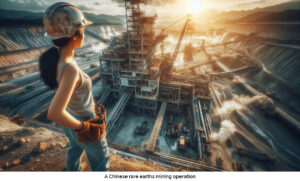Within a generation, we’ll all be driving an electric vehicle (EV).
Not just any EV, but one powered by a solid-state battery (SSB), with a range easily exceeding 1,000 kilometres per charge —a quieter and lighter vehicle that is vastly superior to a conventional car relying on a tank of gasoline.
That kind of vehicle is now a reality. As of last year, it became commercially available in China. The ET7—produced by NIO Inc., the Chinese EV maker renowned for its battery-swapping technology—is considered one of the most luxurious electric sedans on the market.
While NIO’s SSB technology is reportedly not without flaws, its commercial launch marks a pivotal moment in the modern history of EVs.
NIO’s foreign competitors are close on its heels. Hyundai, Mercedes, and Toyota are already known to have prototypes of EVs powered by SSB. They are expected to overcome the few remaining technological hurdles and scale up production by 2030. Older EV models relying on lithium-ion/graphite battery will gradually be phased out.
Obviously, the new technology will have no use for graphite, nickel, or cobalt. The writing is on the wall for developers of these commodities.
There are plenty of them out there, all marketing their metals as “clean” and “critical.” But if there’s no shortage of what they will be producing, can it really be
called critical?
In recent weeks, U.S. President Trump has signed two executive orders designating 20 critical mineral projects to be fast-tracked. There are plenty of uranium, lithium,
and copper projects on the list.
It’s very telling that there’s not a single pure nickel, graphite or cobalt project on it.
A minor exception is the NorthMet Project, which will primarily produce a copper concentrate with some nickel in it.
The current lithium producers, both large and small, won’t escape the disruption posed by the rise of SSBs unscathed. Lithium prices are forecast to remain low until at least 2030. Those lithium hydroxide and carbonate producers that survive this downturn will still face pressure to adapt—and if they aren’t agile enough to pivot, they, too, could fade away.
NAVIGATING THE PATH TOWARD PRODUCTION: TRICKY IN THE BEST OF TIMES
In this age of relentless change, only the most nimble and forward-thinking developers can survive and thrive. The rest will fall by the wayside. If you're an investor evaluating a graphite, nickel, or lithium developer, what yardsticks should you apply to distinguish those with staying power from those likely to fail?
- Can they meet the chemistry challenge?
Aspiring producers must prove—typically through a pilot plant—that they can deliver a product meeting end-user specification.
- Will banks or private equity back them?
If institutional capital won’t step up, why should you?
- How long will it take to build the mine and commission the chemical plant?
Timelines are often optimistic. Delays are costly.
- Can they withstand cost overruns?
Since the pandemic, budget blowouts have become the norm, not the exception. Does their balance sheet have the resilience to survive one?
- Will there even be a market for their product?
Shifting battery technologies can significantly reduce demand for their product.
- Will they be in the lowest cost quartile?
If not, they may not survive when prices fall.
The world will still need nickel, cobalt, and graphite long after EVs become mainstream, but rapid technological shifts could make many of the mines producing them unprofitable.
(Hai Van Le is the author of Into the Unknown, a novel about a Canadian geologist held hostage by Islamic fundamentalists in Mali. The book’s Illustrated Edition will be available in a few months. More information can be found at https://haivanle.com)









